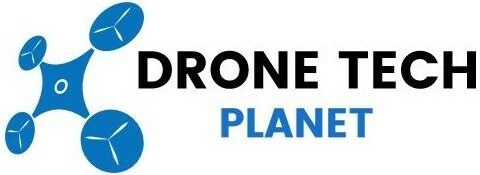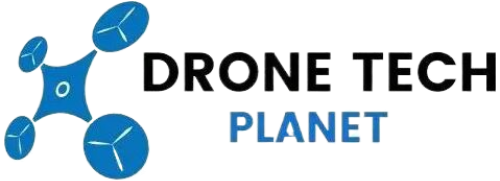How Can Drones be Used in Education?
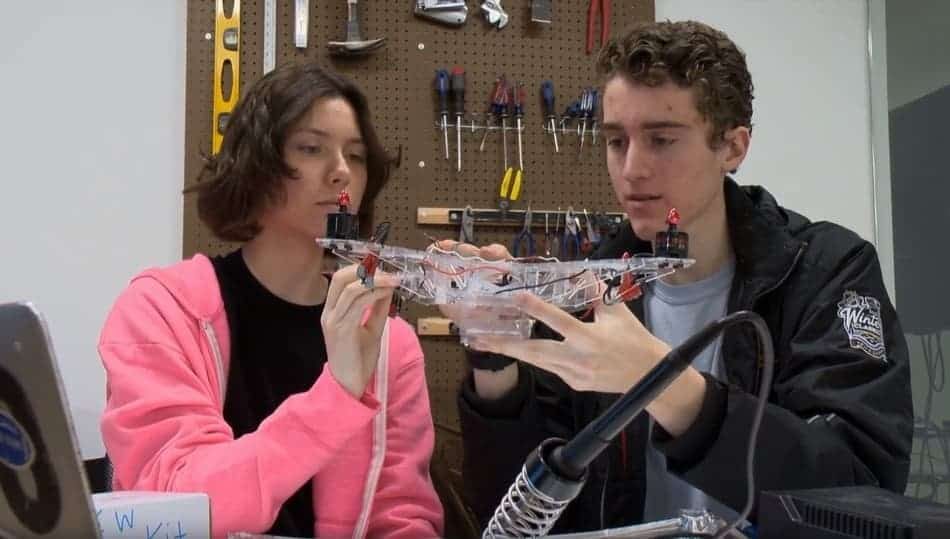
What drones can offer students today is not distraction and fun as many people think, but a rich, imaginative and creative knowledge of what can be done with them, thus awakening their natural curiosity. The advantage of drones in education is a scientifically validated idea that can be presented to these students as a new kind of interesting and creative education and thus be included in the school curriculum.
So how can drones be used in education? When students build and fly their own drones, they learn about computer programming, electricity, project management and physics. The second area which is important is the technical and vocational education. Technical vocational education is education that prepares students for work in a specific trade and it’s rooted in apprenticeship and hands-on learning and authentic work environments.
How Can Drones be Integrated Into Your Educational Program?
The digitalization of students according to new technology is increasingly on the rise; everything from smartphones, tablets, headsets, VR glasses and stuff like that. But what is not yet so developed among the students are drones that are slowly conquering the world with their popularity.
Drones are used almost everywhere today; from taking aerial photographs, agriculture, technology, police, filmography, journalism, espionage, etc. What drones can give children at school is a whole new dimension of opportunities with whom they could develop a very great interest. So let’s see the 5 most common examples of drones use in education:
1. Using Drones to Develop Creativity
Since drones have hit the market for commercial use, it is difficult to remain in privacy. They allow you to take a photo from any perspective that was previously unavailable. The way the drone can be incorporated as part of the school curriculum is to take the children outside and use it in an open environment, record, take pictures, and later transfer it to a computer and present it in some creative way.
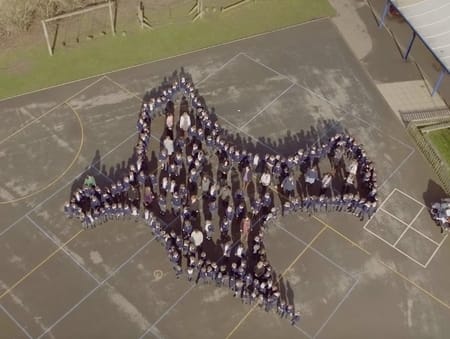
Another example is that if you have a bunch of kids in a group, they can sort and create some kind of symbol or a word and you record it with a drone. You can also use a drone to capture people or animals below you with a thermal camera, and at the same time teach children how this technology works. There are many more examples we could talk about, however, it might be best for you to take advantage of your work environment and with a little creativity, come up with new ways that will serve you.
2. Learning and Applying Math With the Help of Drones
Students find math a very boring subject because everything you do, you do in theory through the tasks that are assigned to you. What could be done and implemented through drones is to make math more interesting and put all that you’ve learned in class into practice by trying to calculate some factors such as; how much time a drone can spend in the air, how far it can travel, how much load it can carry, etc.
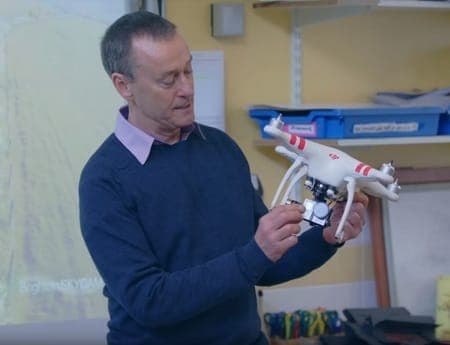
The purpose of this program is to get students, together with their teachers to be active, curious and creative in completing tasks through examples. With this method, students will remember the lesson they worked on and be able to put it into practice one day.
We have plenty of examples in schools where drones are already being used for teaching purposes, and you can also implement some of these programs in your curriculum. One example is how drones can make a path from point A to point B, and students need to graphically illustrate his distance and the time he has traveled to complete it.
Related Article: 10 Best Drones For Education To Build, Code & Configure
3. Development of Motor Skills With the Help of Drones
One of the very important things that can be improved with the help of drones are coordination and motor skills in children. These skills are important because they affect things such as balance, reading, movement, memory, and other motor skills which are related to a child’s development.

When viewed separately, these skills are not interesting enough for children to develop on their own, but with the help of drones, they will be able to work on this skills unconsciously. Drones require excellent coordination of motor skills, all from hands, eyes, reflexes, observations, and deliberation, and as a part of all this, make informed decisions to reach their destination.
As for the choice and type of drones for children to choose, there are plenty of models today that are cheap and affordable for such uses. Therefore, choosing this learning method is really useful and affordable and should be used.
4. The Benefit of Drones in Physical Education
We come to the part that we can safely say poses a major problem in the US as well as in the world, which is obesity in children. Kids today spend almost half a day staring at screens; from cell phones, computers, all the way to TVs, and this is considered a very serious problem that needs to be addressed. From an early age, children need to be activated to engage in some type of activity.
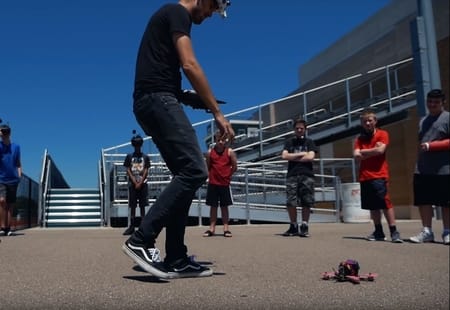
Not only drones are a great choice (except sport, of course), they also make drive you out into the open, thus replacing TVs. In addition, during physical education, teachers can record children for the purpose of analyzing sports activities and later correct them in the things they need to improve those same activities.
One of the more interesting examples that kids would really like is playing hide and seek with drones. You give the kids some time to try and hide somewhere, and after you look for them with a drone.
5. Teaching Science With The Help of Drones
Science is one of the branches that requires perhaps the most concentration and focus among students. With the help of drones, science can become quite interesting and creative, as you can demonstrate some aspects to students to better understand the things around them. The laws of physics can be applied in every aspect with the help of drones, thus giving them different tasks that students need to solve.
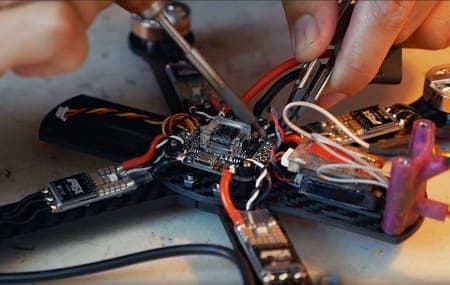
In addition to working theoretically, they will see how it works in practice. Tasks such as calculating the force required for a drone to fly up to the speed of propeller rotation, the influence of gravity on the drone, wind affecting the movement of the drone, etc. In addition to using formulas to calculate these things, you can also see how it works in practice and this will give you a much more interesting and better atmosphere. We can see drones breaking through the scientific aspects, giving them a better quality environment and motivation to learn. If you are interested, I wrote an article about: How to Build Your Own Drone for $20: DIY School Project
The Best Educational Drones to Buy
This technology would be very interesting in the opinion of many, because children could thus combine and learn parallel knowledge of mathematics, physics, programming languages, and electronics. Drones can be purchased very cheap today, especially those designed for recreation and learning purpose, with pricing range from $ 20 to $ 100.
Therefore, do not immediately condemn this type of technology and consider it as some kind of distraction, as this can greatly enhance students’ imagination and their learning process. So these are my recommendations for the best drones for educational purposes:
1. Sky Viper e1700
This drone is designed for anyone who wants to build their own drone without having to be an expert in the field. The Viper e1700 comes with a detailed set of views and instructions on how to assemble it, and it only takes a few minutes.
While this may sound complicated to some, this is all designed to help users fully use the technology of drone, and is intended for children to use it from a young age. What this kit provides users with is a drone builder application that explains to the user all the features related to the drone, the components, and how the drone works within the device. This drone is also used in racing, and the platform itself was designed for this purpose.
The Viper e1700 achieves a speed of 40km/h, which is very fast for this type of drone. The battery used by the e1700 is a 850mAh Li-ion, which can last up to 12 minutes in the air. The drone has 2 flight modes; one is an automatic mode where the drone is self-contained in the air and you just have to navigate it forward, back and to the side.
The other is a manual flight mode, where you have complete control over the drone and you navigate it as you wish. This drone has technology that allows it to automatically launch and land, eliminating the risk of falling. The price of this drone is extremely low, compared to similar models of that class. You can check price, reviews, and pics of SKY Viper e1700 on Amazon at this LINK.
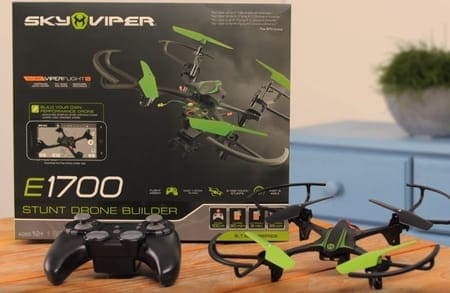
2. Tello EDU Drone
The Tello EDU has joined forces with DJI and Ryze Robotics to create this type of drone for educational purposes. What this educational drone offers is the ability to learn programming languages such as Python, Swift and Scratch. This drone has advanced commands and flight control technology, which makes it easier to operate while flying. Also Tello is extremely stable and has an HD camera that can capture incredibly sharp images.
Choosing this drone will certainly not go wrong, and is recommended for use by all ages, with a price tag of less than $ 100. Just because of its open source concept that allows you to program, you have other options that this drone also offers. Some of these options are creating your own light shows or dancing drones. When choosing to buy a Tello EDU, you get the kit with 3 batteries and 4 chargers as a base part, with plenty of extra equipment in addition.
With this drone, you can compile program code so that a group of multiple drones can fly in swarms in parallel and execute given commands. This drone incorporates mission pads that allow for greater command execution accuracy when programming, and are used as guidance and pointers. One of the interesting features of the Tello EDU drone is object recognition and 3D reconstruction. If you are interested take a look of Tello EDU Drone on Amazon.
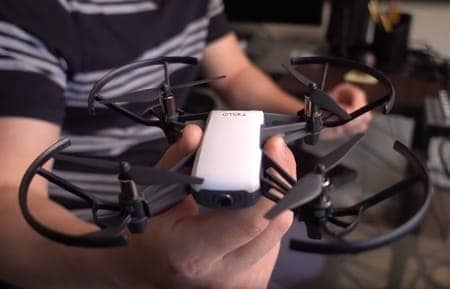
3. Parrot Mambo Fly
When talking about the Parrot Mambo Fly drone, we can say that this is one of the most stable mini drones on the market. Features that enable it are intelligent autopilot mode, numerous sensors on it, and flight control. With these features, this drone can fly as well indoors as outdoors. If you lose control during the flight, the drone itself takes control over and stabilizes it in the air with auto-pilot mode.
This drone can fly for about 9 minutes while it takes about 30 minutes to charge the battery. You will get a couple more spare batteries when you buy this kit, so you don’t have to worry about the battery. Parrot Mambo has built-in technology that allows for unique speed and slope estimation with obstacles and also has a camera capable of capturing 60 frames per second.
This drone consists of many features that are needed not only for how to learn how to operate, but also for how the drone works and what drives it and keeps it in the air. Parrot is a specially designed drone that fits into the classroom and is ideal for children of all ages and has a range of up to 100 meters. This one on Amazon is a best seller and sells for around $39 on this LINK.
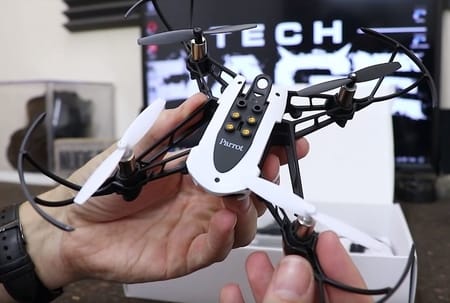
Drone Education
Start looking at why you think drones are cool and then start looking at how your education ties to that. No matter what we do in the drone industry, whether it’s the actual drone itself or the data that we’re collecting and building the algorithms for, it all has those basic fundamentals of science and math.
A lot of people get turned away from STEM topics, because they think they don’t like math or they have a bad experience with the science class. People often get asked where they will apply and use this for? And now it makes sense! Geometry and algebra are directly applied to this program. So there are real-world things and amazing technologies that while we’re learning them in 6 and 7th grade all the way through high school, we can say that they really do have real-world applications.
We’re going to see drone technology integrated across a lot of different educational programs in the coming years. There’s been a lot of excitement, a lot of major accomplishments in drone industry as we’re literally breaking ground on new developments on a daily basis.
The Future of Drones In Formal Education
Drones also known as UAVs are becoming increasingly affordable as for the price. With decent entry-level models that are available in the $100 range all the way to solid models that are equipped with high-definition cameras in the $1000 range.
Drones are powered by much of the same tech that powers our phones. Both drones and smartphones are part of the Internet of Things (IoT), and they collect and share data with other connected objects. Because drones are becoming more and more affordable, we’re seeing more bloggers which list all the benefits on how we can integrate drones into the classrooms. Students must use meaningful opportunities to use tech in authentic contexts.
We could tell that there are 2 areas where drones could show a major leap in use. The first is interdisciplinary project-based learning and one of that projects is the drones for schools program. This is an interdisciplinary program that was developed at the University of Illinois. In this program, students assume the role of engineers and actually build drones.
The rationale for creating this program seems to hinge on 2 key points. First is that the drones will play important role in economy. Second is the process of creating a drones involves many different STEM concepts from many different disciplines.
Why Drones Are Important for STEAM Learning?
What we can say is that STEAM is a reality-driven education program which takes place in the classroom. It connects the different subjects together in the way that they would relate to the business world and to each other’s.
STEAM stands for ‘Science, Technology, Engineering, Art, Math’. So it’s science and technology interpreted through engineering and the arts all based in a language of mathematics. It connects the different subjects together in the way that they would relate to each other. It’s a 21st century skills that the students need. Th arts that STEAM includes are: social arts, manual arts, physical arts and the fine arts.
For successful STEAM program you need to realize that integration is the key. Another great benefit of this program is the creativity that enables students to better apply and understand the content they have seen, and thus come up with possible solutions and implementations. This program also allows real-world examples to be used and the results of these children themselves are enhanced.
The First Launched Drone Program in Education
Northland Community and technical college launched the first UAS maintenance training program. They currently offer summer camps that really cover a wide array of educational disciplines. They get to learn about the electronic systems that drive the stability allowing the system to perform flight and beginning the discussion about where they might like to use those systems in the future.
So as you look at technology today, there’s so much uncertainty of where it’s going to go tomorrow. What really makes a good student is curiosity and a passion to look at what’s possible today, but imagine what they could do tomorrow. The most important thing with this program is connecting students with careers that are based on STEAM.
Conclusion
Teachers who works at a technical vocational school, see drones today from two different perspectives. First is that drones have many real-world applications and the ability to operate drones will be an asset in many industries. Second is that vocational education typically includes work experience and apprenticeship and there are opportunities to have students use drones for learning the real-world applications. Many schools have broadcast media programs.
Students in these programs could use drones to create media productions for real world audiences. Ultimately I believe drones will have a very large impact on student learning and much of this learning will occur outside the classroom.
Drones are going to play an increasingly important role in our economy and opportunities exist now to use drones to engage students through authentic place-based learning experiences. So what you think about the future role of drones in education? Do drones have potential?
